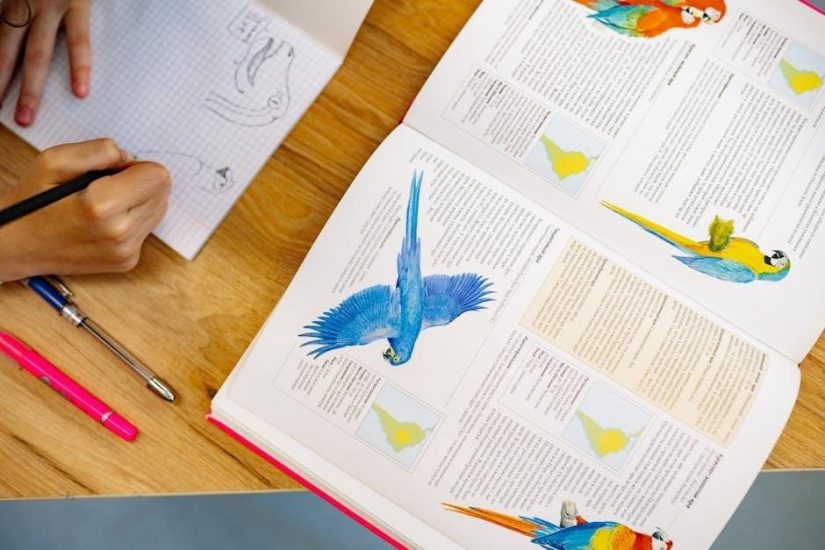Guided writing is a transitional approach where teachers provide support to students, helping them use strategies like reading texts and model texts to encourage collaborative and independent writing, targeting specific skills and boosting confidence and writing skills.
Definition and Purpose of Guided Writing
Guided writing is an instructional approach where teachers provide targeted support to students as they learn to write. It combines explicit teaching, modeling, and collaborative practice to help students develop writing skills. The purpose is to bridge the gap between instruction and independent writing, offering temporary scaffolding. Teachers work with small groups, focusing on specific writing strategies, such as grammar, punctuation, or text structure, to address individual needs. This method fosters confidence and fluency, enabling students to apply learned strategies independently. By tailoring instruction to students’ challenges, guided writing ensures they receive the support necessary to grow as writers.
Importance of Guided Writing in Educational Settings
Guided writing is a vital instructional strategy in educational settings, offering targeted support to students as they develop writing skills. It bridges the gap between teacher-led instruction and independent writing, providing a structured yet flexible environment for learners to practice and refine their abilities. This approach is particularly effective for students struggling with writing difficulties, as it offers personalized guidance and fosters confidence. By focusing on specific writing goals and strategies, guided writing helps students build foundational skills and apply them in meaningful contexts. It also encourages collaboration, allowing students to learn from peers while receiving expert support from teachers. Ultimately, guided writing equips students with the tools and motivation needed to become proficient and independent writers.

How Guided Writing Works
Guided writing is an instructional approach where teachers work with small groups, focusing on specific writing goals and strategies, using model texts and resources to support progress toward independent writing.
Teacher-Student Collaboration in Guided Writing
Teacher-student collaboration is a cornerstone of guided writing, where educators work closely with students to foster writing skills. This collaborative approach allows teachers to provide expert assistance, helping students apply strategies like reading texts, using model texts, and engaging in group or individual writing activities. By working together, teachers can address specific challenges and motivate students to write independently. This dynamic interaction creates a supportive environment where students feel encouraged to express their ideas and develop their writing abilities. The collaborative nature of guided writing ensures that students receive personalized feedback and guidance, enabling them to progress effectively in their writing journey.
Using Model Texts and Writing Strategies
In guided writing, model texts serve as examples of strong writing, helping students understand structure, tone, and language use. Teachers often analyze these texts with students, highlighting key strategies like clear introductions, coherent paragraphs, and effective conclusions. By studying these models, learners gain insights into how to organize their ideas and express them clearly. Writing strategies, such as brainstorming, drafting, and revising, are also introduced and practiced collaboratively. This approach allows students to see how these strategies are applied in real writing scenarios, making them more accessible and actionable. Over time, learners internalize these strategies, becoming more confident and independent in their writing abilities.
Focus on Specific Writing Goals and Skills
Guided writing emphasizes targeting specific writing goals and skills to address the needs of individual students or small groups. Teachers identify particular areas where students may struggle, such as grammar, punctuation, or sentence structure, and tailor instruction to improve these skills. By focusing on explicit writing strategies and techniques, students learn to apply them in their work. This approach encourages the use of model texts to demonstrate effective writing practices, helping students understand how to incorporate these skills into their own writing. Through this focused support, students build confidence and develop the ability to apply what they have learned in independent writing tasks.

Benefits of Guided Writing
Guided writing enhances students’ writing skills and confidence, supports those with difficulties, and inspires independent writing by providing tailored strategies and collaborative practices.
Enhancing Writing Skills and Confidence
Guided writing effectively enhances students’ writing skills and confidence by offering tailored support and strategies. Teachers collaborate with students, using model texts to demonstrate techniques and provide constructive feedback, refining their abilities. This collaborative approach creates a supportive environment where students feel encouraged to take risks and improve. Over time, as students see progress, their confidence grows, motivating them to develop skills independently. Temporary scaffolding in guided writing lessons provides necessary guidance to overcome challenges, further boosting their self-assurance in writing. This structured yet nurturing method ensures students build both competence and confidence, essential for successful writing experiences.
Supporting Students with Writing Difficulties
Guided writing is particularly effective in supporting students who face challenges with writing. It provides scaffolded instruction, allowing teachers to address specific difficulties such as grammar, punctuation, or organizing ideas. By working in small groups or one-on-one, teachers can offer tailored guidance, helping students build confidence and mastery. The use of model texts and collaborative practices encourages students to learn from examples and peers, reducing frustration. This approach also motivates learners with low writing motivation by breaking tasks into manageable steps, fostering progress and a sense of accomplishment. Over time, guided writing helps students overcome barriers, develop essential skills, and become more independent writers.
Inspiring Independent Writing
Guided writing fosters independence by gradually releasing responsibility to students. Teachers provide temporary support, such as model texts and collaborative practices, to build confidence and skills. As students gain proficiency, they transition from group work to individual writing tasks. This approach encourages self-efficacy, enabling learners to apply strategies independently. By focusing on specific goals, guided writing helps students develop a sense of ownership over their writing. This method is particularly effective for struggling writers, as it offers a supportive environment to explore and refine their writing abilities. Over time, students become more self-reliant, equipped with the tools and confidence to write independently. This gradual shift empowers learners to take control of their writing process, fostering creativity and fluency.

Scaffolding Strategies in Guided Writing
Scaffolding strategies provide temporary support, enabling students to practice writing skills collaboratively and independently. Tools like model texts and structured guidance help build confidence and competence gradually.
Providing Temporary Support and Guidance
Guided writing involves offering temporary support to students as they develop their writing skills. Teachers provide scaffolding techniques, such as modeling writing strategies, to help students understand and apply specific techniques. This support is gradually phased out as students gain confidence and independence. For example, teachers may demonstrate how to structure a paragraph or use grammar effectively, then allow students to practice these skills collaboratively or independently. This approach ensures students receive the necessary guidance without becoming overly reliant on it, fostering a smooth transition to independent writing. The temporary nature of this support makes it an effective way to build foundational skills and encourage progress in writing abilities.
Encouraging Collaborative Writing Practices
Collaborative writing practices in guided writing foster a supportive environment where students work together, sharing ideas and strategies. This approach encourages active participation, promoting engagement and reducing writing anxiety. By collaborating, students learn from one another, developing teamwork and communication skills. Teachers facilitate group activities, such as brainstorming sessions or shared writing tasks, to strengthen collective problem-solving. Peer interaction helps students see different perspectives and refine their writing techniques. Collaborative practices also build confidence, as students feel supported by their peers. This method is particularly effective for students who struggle with writing, as it provides a sense of community and shared responsibility. Through collaboration, guided writing becomes a dynamic and enriching experience.

Assessment and Feedback in Guided Writing
Assessment in guided writing involves evaluating student progress through observation and review of written work. Teachers provide constructive feedback to guide improvement and reinforce learning.
Evaluating Student Progress and Understanding

Evaluating student progress in guided writing involves observing their ability to apply writing strategies and skills during collaborative tasks. Teachers assess how well students use model texts and incorporate feedback to improve their work. By reviewing written pieces and engaging in one-on-one discussions, educators can identify strengths and areas needing improvement. This process helps determine if students grasp specific writing goals, such as grammar or punctuation. Regular check-ins allow teachers to track growth over time and adjust instruction to meet individual needs. This ongoing assessment ensures that students receive targeted support, fostering their ability to write independently and confidently.
Offering Constructive Feedback for Improvement
In guided writing, constructive feedback is essential for fostering growth and improvement. Teachers provide specific, actionable comments tailored to individual student needs, focusing on strengths and areas for development. This feedback often highlights grammatical accuracy, clarity, and creativity, helping students refine their writing skills. By addressing specific strategies or techniques, educators guide learners toward better writing practices. Feedback is delivered in a supportive and encouraging manner, ensuring students feel motivated to improve. This approach not only enhances writing quality but also builds confidence, encouraging students to take ownership of their learning and progress independently.
